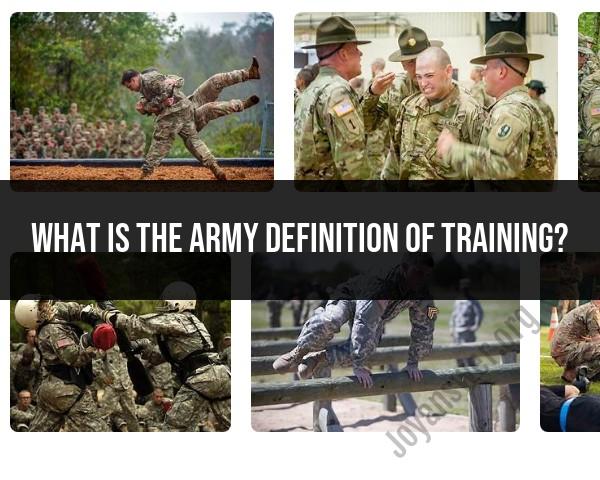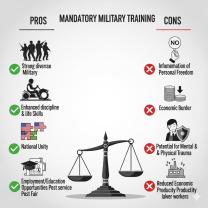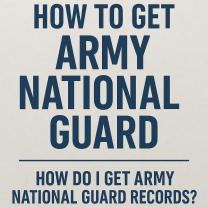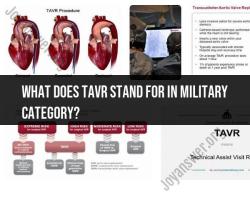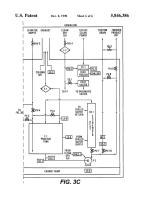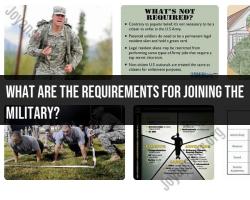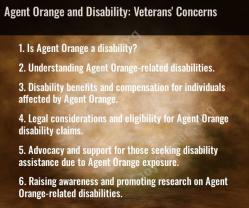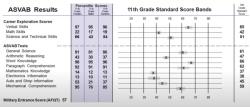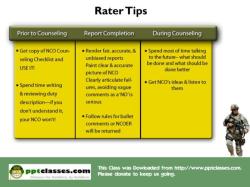What is the Army definition of training?
In the context of the U.S. Army, training is defined as the process of preparing soldiers, leaders, and units to accomplish their assigned missions successfully. The U.S. Army places a strong emphasis on training to ensure that its personnel are well-prepared, adaptable, and capable of performing effectively in a variety of situations.
The U.S. Army's definition of training encompasses several key principles:
Preparation for Missions: Training is focused on preparing soldiers, leaders, and units to execute their missions. This includes training in various skills, tactics, and procedures relevant to their roles and responsibilities.
Readiness: The goal of training is to enhance the readiness of the force. Readiness is a measure of the unit's ability to undertake its assigned tasks and missions promptly and effectively.
Adaptability: Training aims to develop soldiers who are adaptable and can respond to a wide range of challenges and scenarios. This includes training for different environments, types of warfare, and mission requirements.
Skill Development: Training involves the acquisition and enhancement of skills necessary for military operations. This encompasses a broad range of skills, including marksmanship, physical fitness, leadership, medical proficiency, and technical expertise.
Leadership Development: Training is a critical component of leadership development. It prepares leaders at all levels to make sound decisions, communicate effectively, and lead their units successfully.
Team Building: Training fosters teamwork and cohesion within units. Soldiers learn to work together efficiently and communicate seamlessly, contributing to the overall effectiveness of the force.
Continuous Improvement: The Army recognizes the need for continuous improvement and refinement of skills. Training is an ongoing process that evolves based on lessons learned from exercises, deployments, and real-world operations.
Standards and Evaluation: Training is conducted to established standards, and the performance of individuals and units is evaluated against these standards. Evaluation helps identify areas for improvement and ensures that the force maintains a high level of proficiency.
The U.S. Army uses a systematic approach to training, which involves planning, preparing, executing, and assessing training events. This approach ensures that training is comprehensive, effective, and aligned with the Army's mission requirements.
It's worth noting that while this definition is specific to the U.S. Army, the principles of training in other military branches and armed forces worldwide share similar foundational concepts, with variations based on the organization's specific doctrines and operational requirements.
How does the Army define and approach training?
The US Army takes a comprehensive and multi-layered approach to training, with its definition encompassing both instilling foundational skills and preparing soldiers for real-world challenges. Here's a breakdown of how the Army defines and approaches training:
Definition:
- Individual and collective skills: Training develops individual soldier skills through basic training, specialized courses, and on-the-job experience. It also focuses on building cohesive teams and units through collective training, emphasizing teamwork, coordination, and leadership.
- Physical and mental resilience: The Army prioritizes physical fitness and mental toughness. Training includes combat conditioning, marksmanship, survival skills, and psychological resilience building to prepare soldiers for the physical and mental demands of combat and deployment.
- Mission-focused: Training directly connects to the Army's mission and potential operational environments. Scenarios and exercises replicate real-world challenges soldiers might face, ensuring their capabilities align with operational needs.
- Adaptability and critical thinking: The Army emphasizes flexible and adaptable soldiers who can think critically and make decisions under pressure. Training incorporates open-ended situations and encourages initiative to foster these skills.
Approach:
- Progressive system: Training progresses from basic individual skills to complex collective tasks. Soldiers build upon foundational knowledge and experience before tackling more advanced challenges.
- Scenario-based training: Realistic scenarios simulate wartime situations, allowing soldiers to practice decision-making, communication, and problem-solving skills in a controlled environment.
- Technology integration: The Army utilizes technology like virtual reality and simulation exercises to provide immersive training experiences and enhance skills development.
- Leader development: Strong leadership is crucial for effective units. Training emphasizes leadership skills for all ranks, encouraging initiative, responsibility, and effective communication.
- Continuous learning: The Army fosters a culture of continuous learning throughout a soldier's career. Opportunities for self-development, additional training courses, and professional development are encouraged.
Overall, the Army's training approach aims to create versatile, resilient, and mission-ready soldiers capable of operating effectively in complex and dynamic environments.
If you'd like to know more about specific aspects of Army training, like individual skill development or leadership training approaches, feel free to ask!
